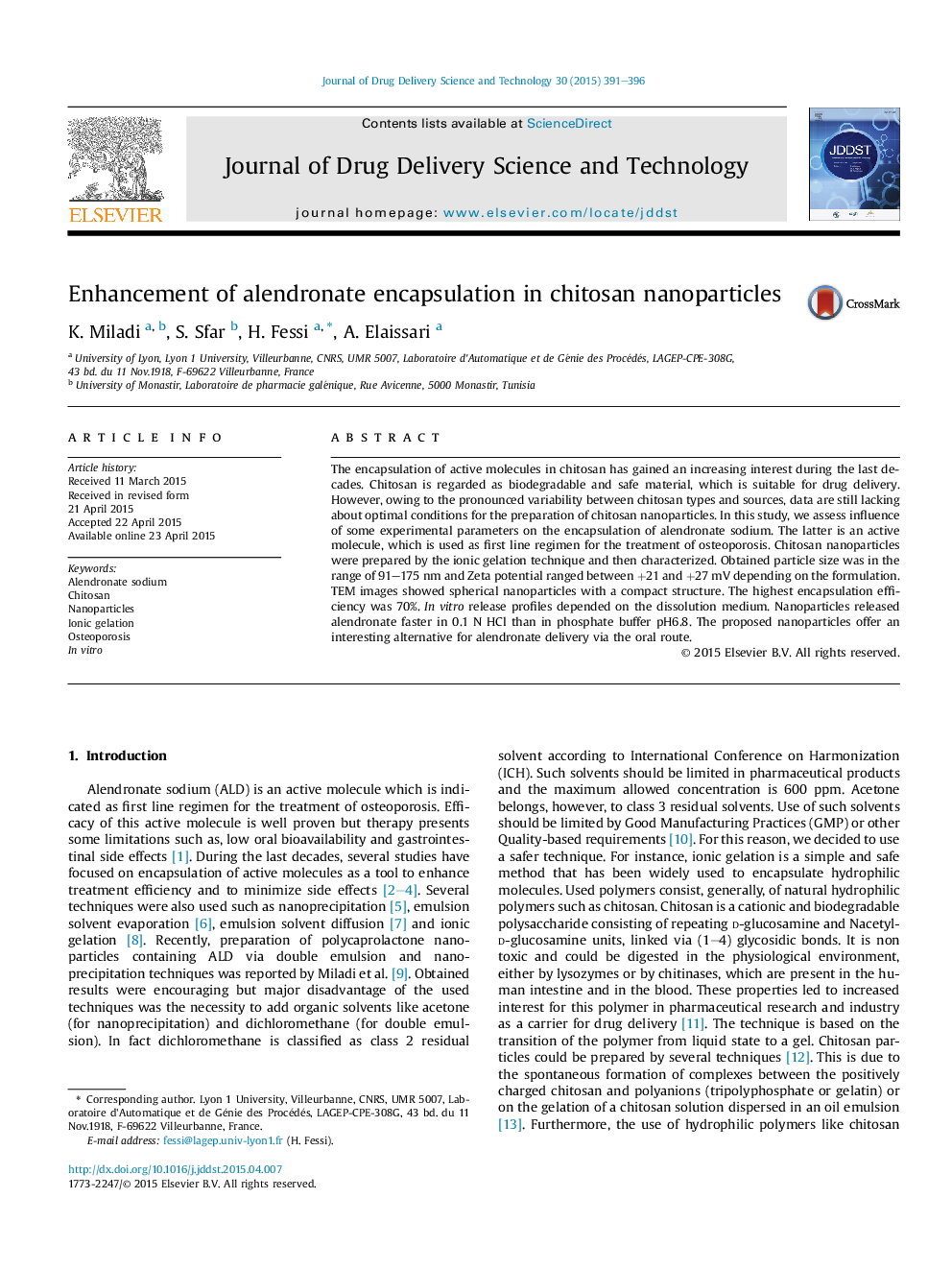| Article ID | Journal | Published Year | Pages | File Type |
|---|---|---|---|---|
| 2483112 | Journal of Drug Delivery Science and Technology | 2015 | 6 Pages |
The encapsulation of active molecules in chitosan has gained an increasing interest during the last decades. Chitosan is regarded as biodegradable and safe material, which is suitable for drug delivery. However, owing to the pronounced variability between chitosan types and sources, data are still lacking about optimal conditions for the preparation of chitosan nanoparticles. In this study, we assess influence of some experimental parameters on the encapsulation of alendronate sodium. The latter is an active molecule, which is used as first line regimen for the treatment of osteoporosis. Chitosan nanoparticles were prepared by the ionic gelation technique and then characterized. Obtained particle size was in the range of 91–175 nm and Zeta potential ranged between +21 and +27 mV depending on the formulation. TEM images showed spherical nanoparticles with a compact structure. The highest encapsulation efficiency was 70%. In vitro release profiles depended on the dissolution medium. Nanoparticles released alendronate faster in 0.1 N HCl than in phosphate buffer pH6.8. The proposed nanoparticles offer an interesting alternative for alendronate delivery via the oral route.
Graphical abstractFigure optionsDownload full-size imageDownload as PowerPoint slide
